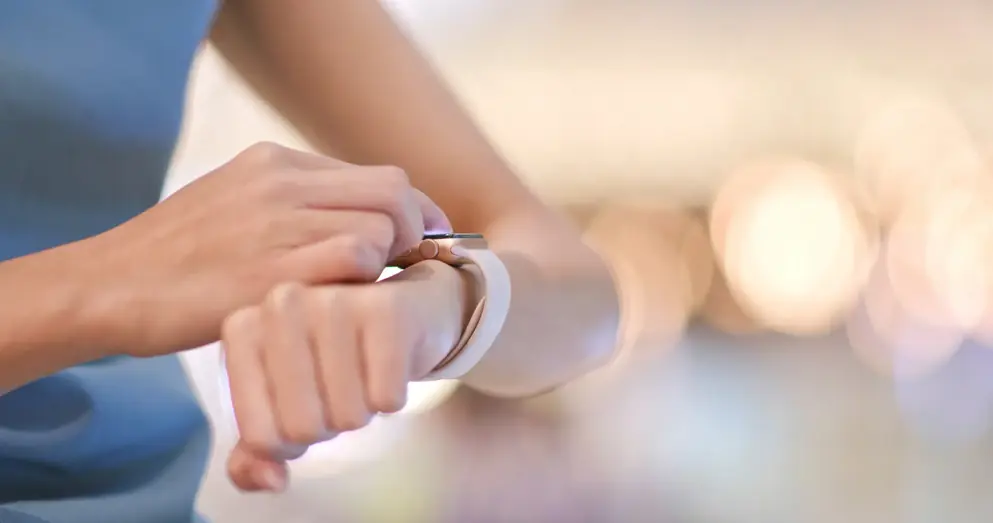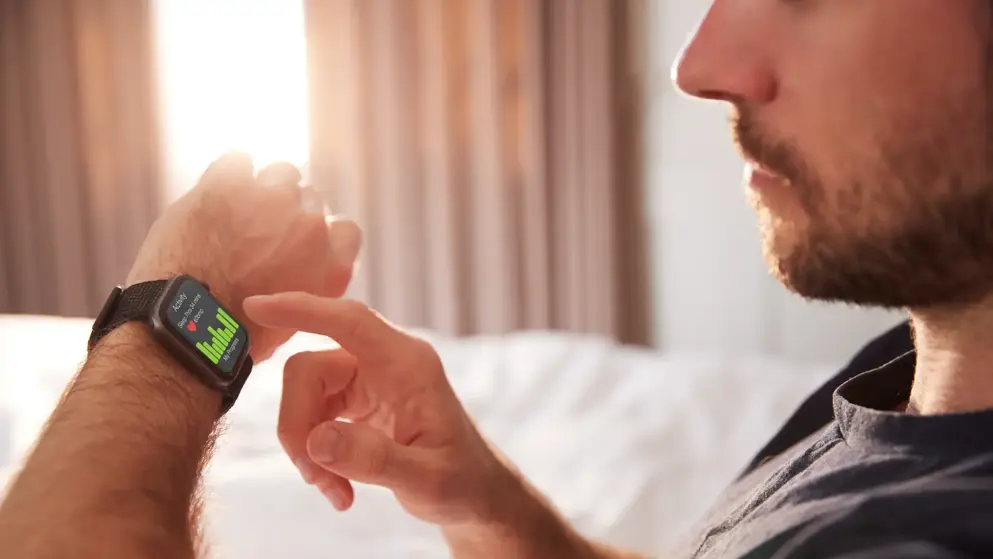
Apple’s AFib history FDA qualified for trials
Can it reliably estimate AFib burden, and what are its key limitations?
On 1 May 2024, the US Food and Drug Administration (FDA) qualified Apple Watch’s atrial fibrillation history feature (AFib History) as a biomarker test to estimate AFib burden in clinical trials.1,2 It is the first digital health technology to receive this qualification under the Medical Device Development Tools (MDDT) programme, meaning the FDA considers the feature reliable enough for use in clinical trials of cardiac ablation devices without needing additional review.1-4
The AFib History feature is now FDA qualified to evaluate AFib burden estimates, for use as a secondary effectiveness endpoint in clinical trials of the safety and effectiveness of cardiac ablation devices2
It is intended for use in people ≥22 years of age diagnosed with AFib.2
How does the AFib History feature estimate AFib burden?
- The Apple Watch’s photoplethysmography (PPG) sensor opportunistically monitors the user’s pulse rate and identifies episodes of irregular heart rhythm that are considered consistent with AFib2
- The AFib History feature analyses the data and retrospectively estimates weekly AFib burden (the proportion of time spent in AFib during the previous week of Apple Watch wear)2,5
The Apple Watch must be worn for 12 hours a day, 5 days a week to generate AFib burden estimates.6
How accurate is the AFib burden estimate?
The performance of the AFib History feature was evaluated in a prospective clinical study of 280 participants with a history of AFib (paroxysmal or permanent).
- The average difference between the AFib weekly burden estimate from the AFib History feature and the reference device (Cardea SOLO Wireless ECG Patch) was 0.67% (95% CI, −0.05 to 1.38%)2
- Most participants (92.9%; 260/280) had paired weekly AFib burden differences within ±5% of the reference device2
Subgroup analysis revealed a difference in performance among those with prior ablation; however, the study was not powered to demonstrate equivalent performance in people with and without prior ablation.2 The FDA acknowledged that reduced heart rate variability after AFib ablation could adversely affect the accuracy of the Apple AFib History feature, so further studies are needed to compare its performance with other methods of determining AFib burden in people with prior ablation2.
Overall, the FDA considered the retrospective AFib burden estimates from the AFib History feature to be clinically acceptable.2
Advantages and limitations of wearable AFib burden estimates
Accurate assessment of AFib burden can be challenging as it ideally involves continuous recording of the date, time of onset and duration of each arrhythmia episode,2,7 previously necessitating use of methods such Holter ECG monitoring or implantable devices.8,9
The FDA noted the Apple AFib History feature may:2
- Address challenges such as patient adherence, potential placebo effects, and technical difficulties in measuring AFib burden without an implantable device
- Reduce barriers to incorporation of AFib history into clinical studies
- Eliminate the need for medical device developers to provide a rationale for AFib history collection methods and cadence, as it provides a weekly AFib burden estimate to compare between treatments (versus other devices, such as Holter monitors, that require justification for the type of device and duration of monitoring). However, the FDA also noted that investigators still need to justify their study design and endpoints
- Allow AFib history data to be captured more easily and consistently between studies
Conversely, limitations of the feature include:
- A lack of data on timing and duration of episodes, ventricular rate during episodes, and other types of arrhythmias2
- Potential for short AFib episodes to not be captured in AFib burden estimates2,5
- The impact of factors such as motion and ambient temperature on PPG-derived pulse data5
- The requirement to correctly fit the device on the wrist, and the absence of monitoring when the user is not wearing the device (e.g., when bathing or charging the device)2,5
Paving the way for more wearable technologies in clinical trials
Overall, the FDA’s qualification of the AFib History feature opens up opportunities to use more non-invasive technologies in cardiology research, and represents an initial step towards approving other novel and innovative digital technologies for use in clinical trials.7
With other non-invasive AFib detection technologies becoming available or in development, including a smart ring10 and adhesive ambulatory ECG patches,11 this is an exciting time for wearables in clinical trials and healthcare.
Disclaimer: This content was prepared independently by Debra Kiss at EPG Health, an IQVIA business, without funding, input or review from IQVIA.
References
- US Food and Drug Administration. 2024. Medical Device Development Tools (MDDT). https://www.fda.gov/medical-devices/medical-device-development-tools-mddt
- US Food and Drug Administration, 2023. Medical Device Development Tool (MDDT) summary of evidence and basis for qualification: Apple atrial fibrillation history feature. https://www.fda.gov/media/178230/download?attachment
- US Food and Drug Administration. 2024. FDA Roundup: May 3, 2024. https://www.fda.gov/news-events/press-announcements/fda-roundup-may-3-2024
- Hale. Fierce Biotech, 2024. Apple Watch's afib-tracking app certified by FDA for use in clinical studies. https://www.fiercebiotech.com/medtech/apple-watchs-afib-tracking-app-certified-fda-use-clinical-studies
- Atrial fibrillation history feature: Instructions for use. https://www.apple.com/legal/ifu/afhf/afhf-ifu-en_GB.pdf
- Apple, 2023. Track your AFib history with Apple Watch. https://support.apple.com/en-au/HT212214
- Ajraoui. IQVIA, 2024. Apple Watch AFib history feature makes medical device history. https://www.iqvia.com/blogs/2024/05/apple-watch-afib-history-feature-makes-medical-device-history
- Chen, 2018. Atrial fibrillation burden: Moving beyond atrial fibrillation as a binary entity: A scientific statement from the American Heart Association. https://www.doi.org/10.1161/CIR.0000000000000568
- Reissenberger, 2023. Determine atrial fibrillation burden with a photoplethysmographic mobile sensor: the atrial fibrillation burden trial: detection and quantification of episodes of atrial fibrillation using a cloud analytics service connected to a wearable with photoplethysmographic sensor. https://www.doi.org/10.1093/ehjdh/ztad039
- NCT04024124, 2023. A ring-type wearable device for atrial fibrillation among ambulatory patients. https://clinicaltrials.gov/study/NCT04024124
- Kim, 2023. Comparison of the 11-day adhesive ECG patch monitor and 24-h Holter tests to assess the response to antiarrhythmic drug therapy in paroxysmal atrial fibrillation. https://www.doi.org/10.3390/diagnostics13193078
of interest
are looking at
saved
next event



